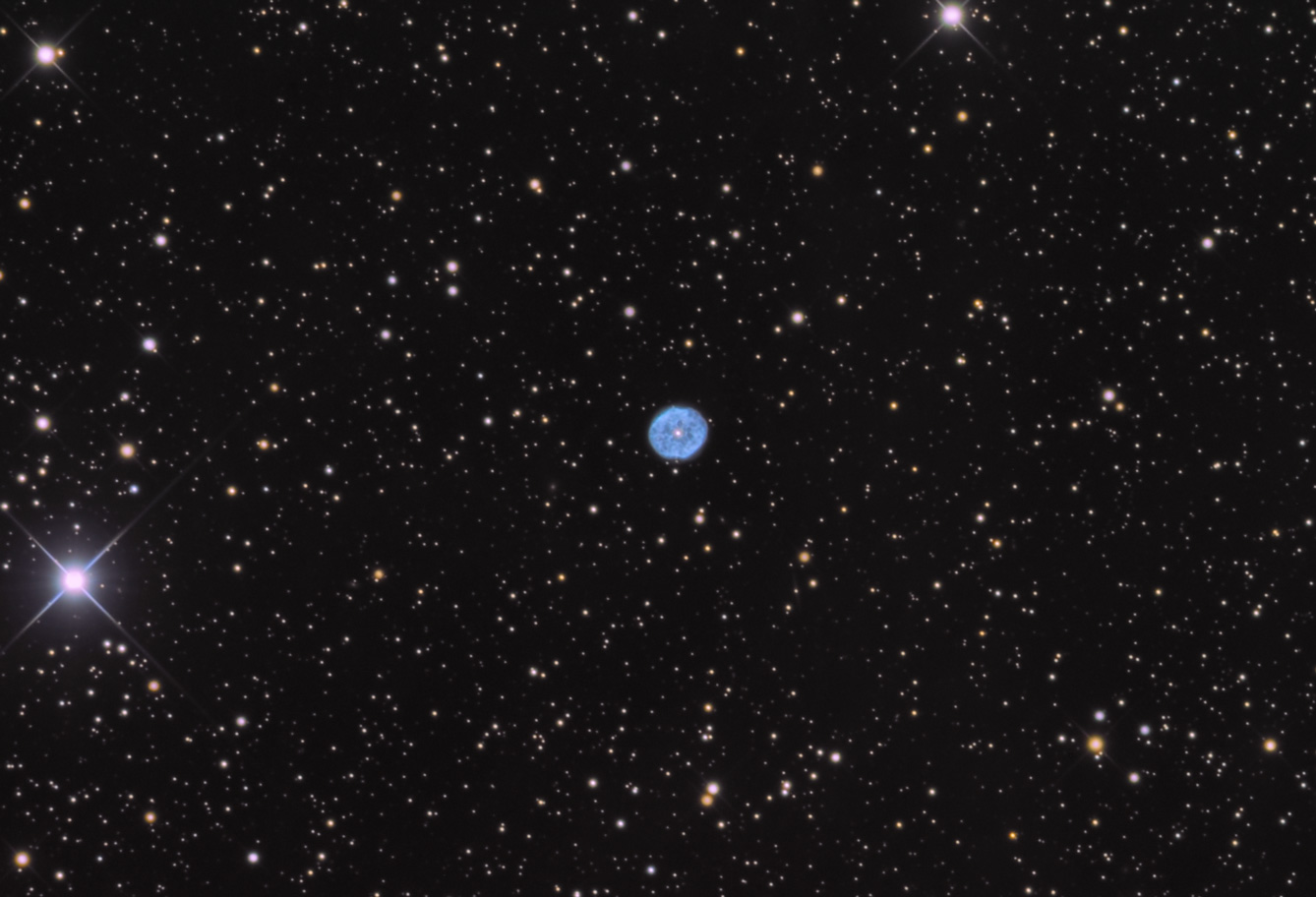Technical Information:
LRGB: 320:50:50:50 (Luminance layer consists of sixteen 20-minute images, unbinned; R, G and B consist of five 10-minute images, all unbinned).
Equipment: 16" RCOS at about f/9, and an SBIG ST-11000M with internal filter wheel (Astrodon filter set), on a Bisque Paramount ME German Equatorial Mount.
Image Acquisition/Camera Control: CCDSoft v5, sometimes controlled with CCDAutoPilot3, and working in concert with TheSky v6.
Processing: All images calibrated (darks and dawn flats) in CCDSoft. All channels debloomed and combined in CCDStack. Luminance layer deconvolved in CCDStack. L, R, G and B layers registered in CCDStack, and combined in Photoshop CS2. Curves and levels performed in Photoshop, as well as a gaussian blur of the RGB layer.
Location: Data acquired remotely from the Tejas Observatory, located on the grounds of New Mexico Skies, near Mayhill, NM (elevation 7300 feet).
Date: Almost all images taken during the night of 12/21/2006; a couple of the luminance images taken during the night of 11/26/2006.
Pixel scale: .505 arcseconds per pixel.
CCD Chip temperature: -25C
Seeing: Generally very good for luminance layer; deteriorating rapidly for the color channels (worst in red).
Transparency: Very good
Moon Phase: No moon during imaging

